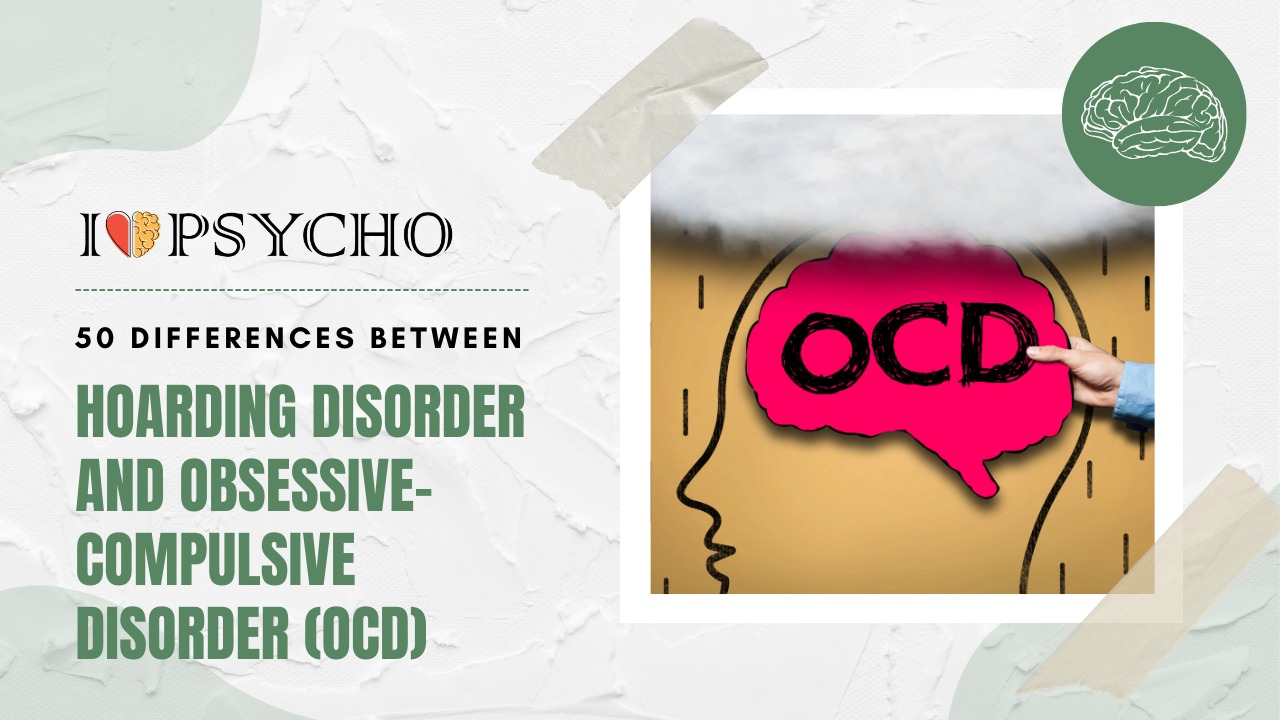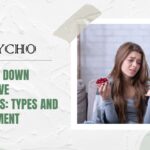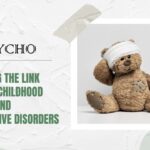Hoarding Disorder involves hoarding stuff, frequently useless. Even though these goods clutter living areas and hamper usefulness, hoarders feel terrible about throwing them away. Despite their utility, the disorder makes it hard to let go of belongings. Hoarders struggle to let go because their items are emotive. This can lead to congested living situations that threaten physical and mental health.
OCD, on the other hand, entails intrusive, disturbing thoughts (obsessions) and repetitive mental activities (compulsions) to reduce their misery. Like hoarding disorder, OCD goes beyond accumulating things. OCD sufferers may overwash, check locks, or arrange items. The person recognizes the compulsions as excessive and unreasonable, but they do them to relieve worry.
OCD and hoarding overlap despite their distinctions. Both diseases cause worry and suffering, and hoarders may do repetitive tasks like organizing or counting. Based on the symptoms’ main focus, it’s important to distinguish between the two. OCD is about uncomfortable obsessions and obsessive actions to eliminate them, whereas hoarding disorder is about acquiring and keeping belongings.
Hoarding disorder and OCD treatment differ. OCD is treated well with cognitive-behavioral treatment, especially ERP. ERP requires gradual exposure to anxiety-provoking circumstances and no compulsions. Hoarding disorder is treated with cognitive-behavioral treatment that targets hoarding attitudes and behaviors.
Finally, Hoarding Disorder and Obsessive-obsessive Disorder share anxiety and obsessive behaviors, but they have different diagnostic criteria and processes. OCD entails uncomfortable obsessions and compulsions to reduce anxiety, whereas Hoarding Disorder involves emotional connection to goods and difficulties abandoning them. These variances must be understood to accurately diagnose and treat mental health issues.
Also Read: 28 Difference Between Schizoaffective Disorder and Dysthymia
Here are the 50 differences between Hoarding Disorder (HD) and Obsessive-Compulsive Disorder (OCD):
|
S.No. |
Aspect |
Hoarding Disorder (HD) |
Obsessive-Compulsive Disorder (OCD) |
|
1 |
Primary Feature |
Excessive accumulation of possessions |
Recurrent obsessions and compulsions |
|
2 |
Discarding Items |
Difficulty discarding possessions |
No specific difficulty discarding possessions |
|
3 |
Cognitive Focus |
Concerned about the utility of items |
Distressed by intrusive thoughts (obsessions) |
|
4 |
Emotional Response |
Anxiety about discarding |
Anxiety driven by obsessions |
|
5 |
Hoarding Environment |
Cluttered living spaces |
No specific impact on living spaces |
|
6 |
Cleaning Habits |
Often neglect cleaning and organizing |
Cleaning and organizing are compulsive rituals |
|
7 |
Sense of Attachment |
Attach strong emotional value to items |
Obsessions are not tied to personal items |
|
8 |
Decision Making |
Difficulty making decisions about possessions |
Obsessions cause distress but not indecision |
|
9 |
Insight |
Often lack insight into the problem |
Usually have insight into the irrationality |
|
10 |
Perfectionism |
Not necessarily perfectionistic |
May have perfectionistic obsessions |
|
11 |
Rituals vs. Accumulation |
Accumulation is the primary ritual |
Rituals are performed in response to obsessions |
|
12 |
Time-Consuming |
Time-consuming due to organizing items |
Time-consuming due to performing compulsions |
|
13 |
Categories of Items |
Collect various items, often seemingly useless |
Obsessions can be about any topic or theme |
|
14 |
Age of Onset |
Typically starts in late teens to early 20s |
Can develop at any age |
|
15 |
Family Involvement |
Family members may participate in hoarding |
Family may be involved due to distress |
|
16 |
Belief about Harm |
May believe possessions protect from harm |
Obsessions often involve fear of causing harm |
|
17 |
Therapy Approach |
CBT and Exposure Response Prevention (ERP) |
|
|
18 |
Medication |
No specific medication treatments |
Medications like SSRIs can help manage symptoms |
|
19 |
Prevalence |
Estimated at around 2-5% of the population |
Estimated at around 1-2% of the population |
|
20 |
Brain Imaging |
Unique patterns in brain scans (e.g., ventromedial prefrontal cortex) |
Brain scans may show different patterns |
|
21 |
Functional Impairment |
Impairment often linked to living conditions |
Impairment relates more to time-consuming rituals |
|
22 |
Social Isolation |
May lead to social isolation due to clutter |
Isolation may result from time-consuming rituals |
|
23 |
Safety Concerns |
Increased fire and health hazards |
Safety concerns often related to obsessions |
|
24 |
Awareness of Problem |
Often minimal awareness of the issue |
Typically aware that obsessions are irrational |
|
25 |
Interference with Work |
Can interfere with occupational functioning |
May affect work due to time-consuming rituals |
|
26 |
Financial Implications |
May spend money on acquiring more items |
May spend money on treatment or avoidance |
|
27 |
Motivation for Behavior |
Driven by perceived value of possessions |
Driven by anxiety and intrusive thoughts |
|
28 |
Relationship Impact |
Strains relationships due to clutter |
May strain relationships due to rituals |
|
29 |
Comorbidity |
May co-occur with OCD or other disorders |
May co-occur with other anxiety disorders |
|
30 |
Specific Phobias |
Less likely to have specific phobias |
May have specific phobias related to obsessions |
|
31 |
Suicidal Thoughts |
Lower risk of suicidal thoughts |
Higher risk, especially with severe obsessions |
|
32 |
Diagnostic Criteria |
Criteria specified in DSM-5 for HD |
Criteria specified in DSM-5 for OCD |
|
33 |
Concept of Control |
Struggle to control possessions |
Struggle to control obsessions and compulsions |
|
34 |
Guilt and Shame |
Guilt related to clutter and hoarding |
Guilt often tied to obsessions and compulsions |
|
35 |
Sense of Relief |
Relief from acquiring or saving possessions |
Relief from compulsions, temporary |
|
36 |
Treatment Focus |
Focused on decluttering and organization |
Focused on reducing obsessions and compulsions |
|
37 |
Hoarding Severity Scale |
Used to assess the severity of hoarding |
No specific scale for OCD severity |
|
38 |
Anxious Attachment |
Often exhibit anxious attachment patterns |
Attachment patterns less directly tied to anxiety |
|
39 |
Cognitive Flexibility |
Reduced cognitive flexibility |
May experience cognitive inflexibility |
|
40 |
Motivation for Change |
May have low motivation for change |
Often motivated to reduce distress from obsessions |
|
41 |
Emotional Hoarding |
Emotional attachment to objects |
Emotions tied to obsessions rather than objects |
|
42 |
Social Implications |
May lead to social isolation due to clutter |
Social interactions can be impaired by rituals |
|
43 |
Animal Hoarding |
May involve hoarding of animals |
Animal hoarding less commonly associated with OCD |
|
44 |
Fear of Contamination |
Contamination fears less common |
Fear of contamination a hallmark of OCD |
|
45 |
Need for Symmetry |
Symmetry and order not a primary concern |
Need for symmetry and order may be prominent |
|
46 |
Thought-Action Fusion |
Thought-action fusion less pronounced |
Thought-action fusion often seen in OCD |
|
47 |
Impact on Family |
May cause distress and involvement of family |
Family members may try to help alleviate distress |
|
48 |
Executive Functioning |
May have deficits in executive functioning |
Executive functioning may be impacted by obsessions |
|
49 |
Cognitive Distortions |
Distorted thinking related to possessions |
Cognitive distortions often tied to obsessions |
|
50 |
Relapse Prevention |
Focus on preventing re-accumulation of items |
Focus on preventing the return of obsessions |
Also Read: Detailed history and approaches to clinical psychology and its opportunities
Frequently Asked Questions (FAQS)
Q.1 What is the main difference between Hoarding Disorder and Obsessive-Compulsive Disorder (OCD)?
The biggest difference is attention. Hoarding Disorder is characterized by excessive possessions, difficulty discarding objects, and emotional connection. In contrast, OCD encompasses painful obsessions (unwanted thoughts, anxieties) and compulsions (repetitive behaviors) to reduce anxiety. Hoarding is driven by the urge to keep goods, whereas OCD compulsions reduce obsession-related suffering.
Q.2 Can someone have OCD and hoarding?
People can have both conditions. Hoarding and OCD share symptoms, according to research. To treat symptoms properly, it’s important to distinguish their main emphasis. OCD obsessions/compulsions and hoarding behaviors must be addressed for effective management.
Q.3 What causes these disorders?
Hoarding Disorder and OCD may be caused by genetic, neurological, and environmental reasons. Genetic susceptibility, brain structure and function variations, and serotonin imbalances may contribute. Stressful life circumstances might also worsen symptoms.
Q.4 How are OCD and Hoarding treated?
Treatment methods differ. Cognitive Behavioural Therapy (CBT), especially ERP, is the best therapy for OCD. ERP entails progressively addressing anxiety triggers and resisting compulsions. Cognitive-behavioral therapies for hoarding disorder work. OCD can be treated with selective serotonin reuptake inhibitors.
Q.5 Are these illnesses curable?
While there is no “cure,” appropriate therapy can relieve symptoms and improve quality of life for many people. The aim is usually symptom management and coping skills, not symptom removal. With persistent therapy, medication (if needed), and support, people can recover significantly.









